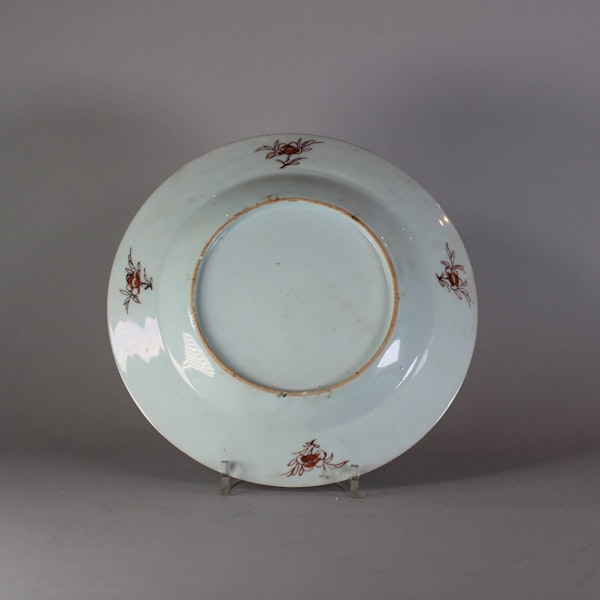Chinese famille rose cockerel plate, Yongzheng (1723-35)
Chinese famille rose cockerel plate, Yongzheng (1723-35)
POA
Description
Chinese famille rose cockerel plate, Yongzheng (1723-35), decorated to the centre with a cockerel and two chicks beside a wall with flowering peony and prunus, the border with pomegranate shaped cartouches against a pink cell and red spiral ground, with alternating lotus and peony heads
Dimensions:
Diameter: 22.8cm. (9in.)
Condition:
Good condition
Notes:
The tenth animal of the zodiac, roosters have featured in Chinese art for millennia. The first reference to the zodiac in China date from the Western Han Dynasty (206 BCE- 9 CE), and tomb figurines of roosters, believed to keep evil spirits at bay as well as serving as an offering to sustain the deceased in the afterlife, have been found across China. Over time, the rooster became an important symbol associated with the New Year, and images of roosters were often pasted onto doors on the first day of the lunar New Year to protect the household – a tradition which continues today in many parts of China. The association of roosters with good fortune stems from the homonym – chicken (ji) or rooster (gonji) can serve as a visual pun representing luck (ji). Furthermore, more complex symbolic meaning can be construed through rooster imagery depending on the placement and representation of the rooster. For example, two roosters shown standing with one slightly higher refers to a wish for continued success; as the combination of the words ‘coxcomb’ (jiguan) and ‘standing’ (shang 上) evokes the phrase guangshang jiaguan (‘may you achieve rank upon rank’). Moreover, when a rooster is standing upon a rock (shi), the additional understanding of familial good luck (also pronounced ‘shi’) is evoked.
| item details | |
|---|---|
| Material and Technique | Porcelain with overglaze enamel decoration in the famille rose palette |
| Origin | Chinese |
| Period | 18th Century |
| Condition | Excellent |
| Diameter | 22.8cm. (9in.) |
Product REF: W259




